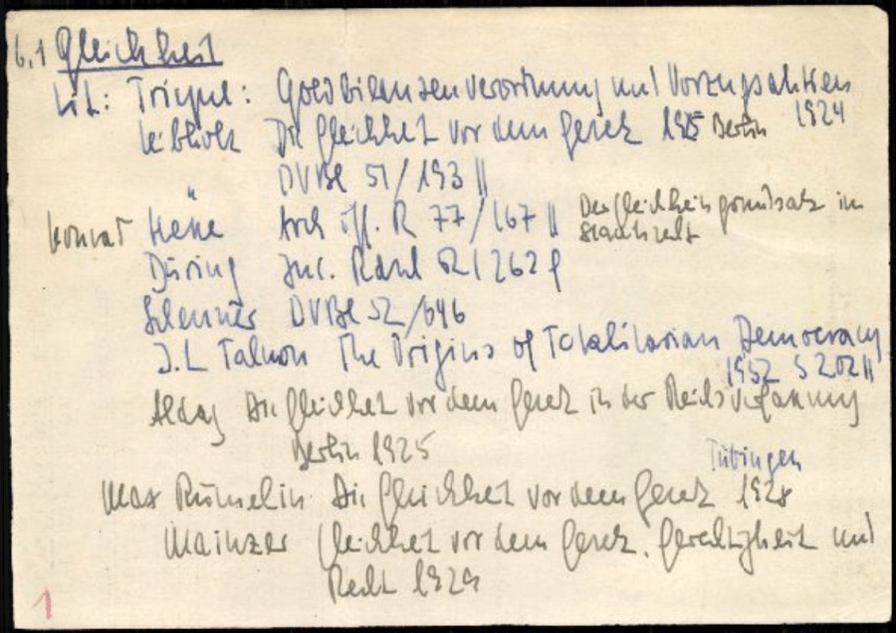How To Take Smart Notes: 10 Principles to Revolutionize Your Note-Taking and Writing - Forte Labs

my notes ( ? )
Books on note-taking... always too vague and boring, full of platitudes ... never an overarching system for turning notes into concrete results ... [but]
How To Take Smart Notes ... is by far the most impactful and profound book I’ve ever read on the subject... most books are a few morsels of real insight wrapped in... fluff... I systematically unravel ... fluff and extract ... insights... distilling only the purest compound... Instead of squeezing as many pages as possible out of one idea, How To Take Smart Notes squeezes as many ideas as possible onto every page ...
I’ll summarize the 10 most important principles ... also a detailed, step-by-step description of the method ...
turning one’s thoughts into writing isn’t just useful for writers but for anyone who wants to improve their thinking and learning ... Instead of notes becoming a “graveyard for thoughts,” ... a life-long pool of rich and interconnected ideas ... not just for a single project.. for a lifetime of reading and researching ... an equal thinking partner... secondary memory ... continuously surprised him with ideas he’d forgotten he had...
Principle #1: Writing is not the outcome of thinking; it is the medium in which thinking takes place... If you want to learn and remember ... write it down... to understand an idea, ... translate it into your own words... why not use that writing to build up resources for future? ... Just because you read more doesn’t automatically mean you have more or better ideas.
Principle #2: Do your work as if writing is the only thing that matters... An idea kept private is as good as one you never had... live as if you are working toward publication. You’ll read differently... more focused ... ask sharper questions... feedback ... will propel your thinking...
Principle #3: Nobody ever starts from scratch... You have to immerse yourself in research before ... formulate a good question... When the time comes to produce... look in our notes and follow our interests, curiosity, and intuition.. informed by ... reading, thinking, discussing, and taking notes ... Taking notes ... systematically extract information from linear sources, mix ... until new patterns emerge... turn them back into linear texts for others...
Principle #4: Our tools and techniques are only as valuable as the workflow... a repeatable process for collecting, organizing, and sharing ideas...
Principle #5: Standardization enables creativity... potential of the shipping container was only unleashed when every other part of the shipping supply chain was changed to accommodate it... Notes are like shipping containers for ideas... treat each and every note exactly the same way... critical mass to build up in one place ... easily ... assembled into endless configurations ...
When looking for interesting connections ... be in a playful, curious state of mind... The slip-box [zettelkasten] is the host ... a place where distinct batches of work can be created, worked on, and saved permanently until the next time we are ready to deploy that particular kind of attention...
Principle #6: Our work only gets better when exposed to high-quality feedback
Principle #7: Work on multiple, simultaneous projects... the full potential of an external thinking system is realized... record the best ideas you encounter – whether or not you know how they will ultimately be used... set our future selves up for a high probability of productive “accidents.”
Principle #8: Organize your notes by context, not by topic... instead of filing things away according to where they came from, you file them according to where they’re going... A librarian asks “Where should I store this note?” ... A writer asks “In which circumstances will I want to stumble upon this note?”
Principle #9: Always follow the most interesting path... in creative work, questions change and new directions emerge ... breaking down ... writing into discrete steps, getting quick feedback ... always following the path that promises the most insight...
Principle #10: Save contradictory ideas... easier to develop an argument from a lively discussion of pros and cons ... contradictory data ... raises new questions and opens new paths of inquiry... counteract confirmation bias
8 Steps of Taking Smart Notes:
Make fleeting notes... quick, informal notes on any thought or idea that pops into your mind...
literature notes... As he read... main points ... with the bibliographic details ... Be extremely selective ... as short as possible... Use your own words...
permanent notes... the long-term knowledge ... look through ... fleeting and literature notes ... think about how they relate ... develop arguments and discussions ... write down each new idea, comment, or thought on its own note... as if you are writing for someone else ...
delete the fleeting notes ... file the literature notes ... Add your permanent notes ... add links to (and from) related notes... + to a “table of contents” and entry point for an important topic ... creating an internal pathway
an “overview” note... provide a “bird’s eye view” ... [when] a big picture view is needed... structure your thoughts ... in-between step in the development of a manuscript
Read the Full Post
The above notes were curated from the full post fortelabs.co/blog/how-to-take-smart-notes/.Related reading
More Stuff I Like
More Stuff tagged zettelkasten , creativity , blogging , confirmation bias , productivity , content strategy , personal , annotate
See also: Content Strategy , Social Media Strategy , Content Creation & Marketing , Digital Transformation , Thinking tools , Zettelkasten , Personal Productivity , Innovation Strategy , Psychology , Social Web , Politics , Communications Strategy